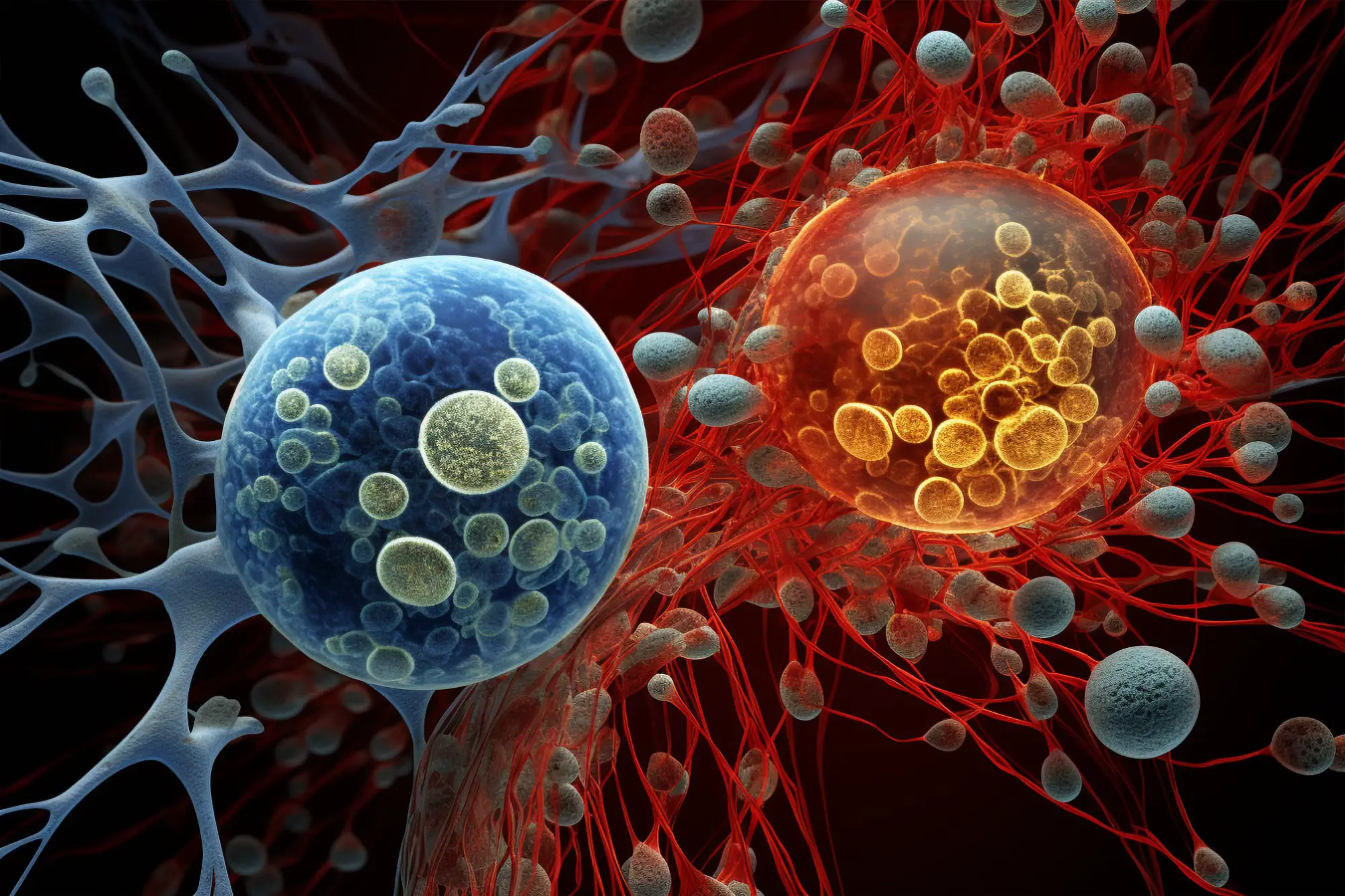Researchers have developed a theoretical model for understanding cell communication and movement. Their latest discovery could have a profound impact on wound healing, and early computer simulations show that it may improve information flow to promote healing. Application in wound healing.
The physics of cell communication: ISTA scientists have successfully modeled cell dynamics.
Cells communicate, just like we do. Well, in their own special way. Cells use waves as a common language to tell each other when and where to move. They talk, share information, and collaborate. This is much like the interdisciplinary team of researchers at the Austrian Institute of Science and Technology (ISTA) and the National University of Singapore (NUS). They conducted research into how cells communicate and how this might affect future projects, such as applications in wound healing.
Biology often conjures images of animals, plants, and even theoretical computer models. The last relevance may not immediately come to mind, but it is very important in the study of biology. Complex life phenomena can be understood down to the smallest detail through precise calculations. ISTA Professor Edouard Hanneso uses these calculations to understand the physical principles of biological systems. His team’s recent work provides new insights into how cells move and communicate within living tissues.

A storm of stunning colors. This shows activation of a chemical signaling pathway (ERK pathway, top right) combined with a simulation of her 2D cell area in a monolayer of cells (bottom left). Credit: © Hannezo Group/ISTA
Cellular Movement and Communication: A Theoretical Model
During his PhD, Daniel Boocock developed a detailed new theoretical model with Hanneso and long-term collaborator Takeshi Hirashima of the National University of Singapore. Published in the July 20 issue of the magazine PRX life, This model provides a better understanding of long-distance inter-cell communication. It depicts the complex mechanical forces exerted by cells and their biochemical activities.

The physical side of biology. ISTA Professor Edouard Hanneso (left) and recent ISTA graduate Daniel Boocock (right) use theoretical physics to understand the complexities of biology. Credits: (c) ISTA
cells communicate in waves
“Suppose you have a Petri dish covered with cells, a monolayer. They appear to be just sitting there. ,” Hanneso explains.
Similar to a dense crowd at a concert, when one cell pulls to one side, another senses the movement and responds by either going in the same direction or pulling in the opposite direction. Information is propagated and transmitted in waves. Waves can be seen with a microscope.
“Cells sense not only mechanical forces, but also their chemical environment, the forces and biochemical signals that cells exert on each other,” Hanneso continues. “Their communication is an interplay of biochemical activity, physical behavior, and movement. has so far not been elucidated.”

ISTA alumnus Daniel Boocock on the ISTA campus. Credits: (c) ISTA
predict movement patterns
Inspired by the visible wave patterns, scientists aimed to create theoretical models that test previous theories about cell motion. Daniel Boocock elaborates: “In our previous work, we wanted to clarify the biophysical origin of waves and whether they have a role in organizing collective cell migration. We did not take into account the liquid-to-solid transitions of , the noise inherent in the system, or the detailed structure of waves in 2D.”
Their latest computer model focuses on cell motility and tissue material properties. With it, Boocock and Hanneso discovered how cells communicate mechanically and chemically and how they move. They were able to reproduce the phenomenon observed in the Petri dish, validating a theoretical explanation of cell communication based on physical laws.

Professor Edouard Hannezo on the ISTA campus. He leads a research group on the physical principles of biological systems. Credits: (c) ISTA
test the theory
For experimental proof, Boocock and Hanneso collaborated with biophysicist Takeshi Hirashima. To rigorously test whether the new model could be applied to real biological systems, the scientists used his MDCK cells (a specific mammalian used his 2D monolayer of kidney cells).
“If you block the chemical signaling pathways that allow cells to sense and generate forces, they stop moving and the communication wave doesn’t spread,” Hanneso explains. “With our theory, we can easily change different components of a complex system and determine how the organizational dynamics adapt.”
what’s next?
The cellular organization exhibits properties similar to liquid crystals. That is, it flows like a liquid, but is organized like a crystal. “In particular, the liquid crystal-like behavior of living tissue has only been studied independently of mechanochemical waves,” Boocock added. Similar to living organisms, extension to 3D tissues or monolayers with complex geometries could be one of the future research avenues.
Researchers have also begun to refine the model for wound healing applications. Healing is accelerated in computer simulations when parameters improve the flow of information. “What’s really interesting is how well our model works for wound healing of cells in vivo,” added Hannezo enthusiastically.
Reference: “Interaction of mechanochemical patterning and glass dynamics in cell monolayers” by Daniel Boocock, Takeshi Hirashima and Edward Hanneso, 20 July 2023, Available here. PRX Life.
DOI: 10.1103/PRXLife.1.013001
